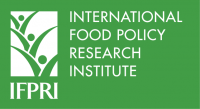
Nearly 30 years after the 1984 famine that left more than 400,000 people dead, Ethiopia has made significant progress toward food security. Some of these recent successes include a reduction in poverty, an increase in crop yields and availability, and an increase in per capita income—rising in some rural areas by more than 50 percent!
What happened to cause this breakthrough, and what steps does the country need to stay on track?
Food and Agriculture in Ethiopia: Progress and Policy Challenges a recently released book by IFPRI Senior Researchers Paul Dorosh and Shahidur Rashid, discusses this. According to the authors, one reason for Ethiopia’s recent economic accomplishments is sustained agricultural growth. In the 1990s, agricultural growth averaged nearly 3 percent. In the next decade, it grew to 6.2 percent. Calorie malnourishment—insufficient diets or diets deficient in vitamins and nutrients—fell from 66 percent in 2000 to 46 percent in 2005. Over the same time period, the prevalence of underweight children younger than five years old dropped from 47.2 to 38.4 percent. A permanent shift from an environment prone to severe food crises to a stable and well-nourished one is possible—if the country maintains this agricultural growth.
One measure Ethiopia has already taken is establishing the Ethiopian Agricultural Transformation Agency (ATA). As described in an article in IFPRI’s Insights magazine, the ATA combines the “analytical capacity of a research organization with the political and economic power of an implementing organization” to enact policies based on three common factors for success: strong government support, financial support from both government and large-scale donors, and projects that target the day-to-day financial concerns of Ethiopians as well as national economic goals.
According to the book’s authors, Ethiopia’s future is bright—if it takes concrete steps to:
- sustain growth in crop and livestock production
- increase market efficiency through better roads and wider access to electricity and information
- provide effective safety nets to protect the most vulnerable households
- maintain stability of the Ethiopian currency, the birr
- manage the country’s demographic transition, as people leave rural areas for the cities
Some solutions are straightforward. For example, increased use of fertilizer, irrigation, and improved seeds can improve crop productivity. Fertilizer use was a large factor behind the cereal production increases in the 2000s, but it is still low: less than half of farmers used fertilizer in 2007 and 2008. And further research shows farmers rarely irrigate or use improved seeds. Others, such as achieving sustained macroeconomic stability, are more complicated and require, as do all new solutions, well-researched policies to implement them.
Ethiopia, by many measures, has made great progress since its great famine of 1984. But, say the authors, there is still work to do: namely continuing with thoughtful agricultural policies informed by research that, in turn, will help create a stable, food secure nation.
Read the Issue Brief based on the book.
